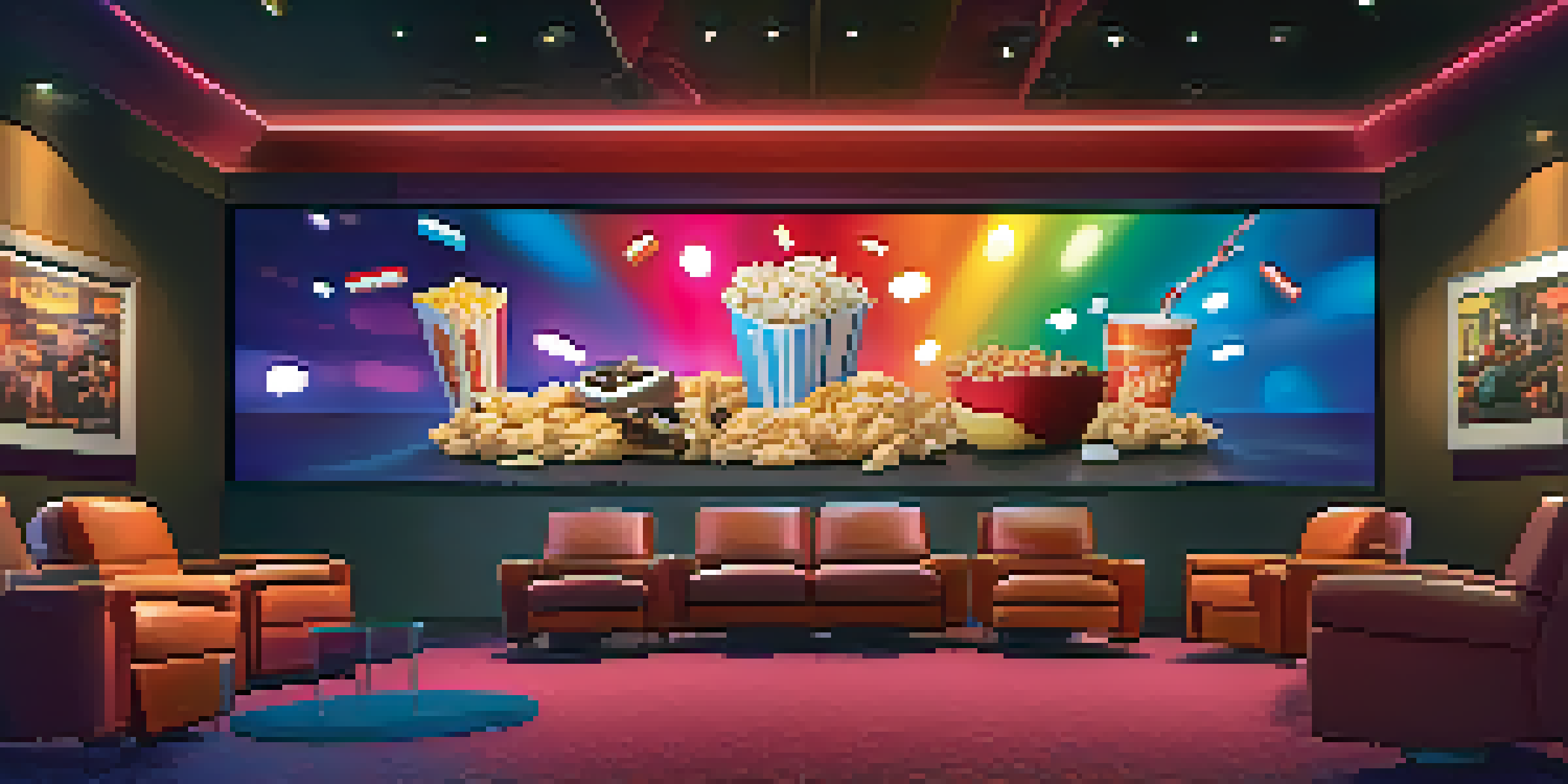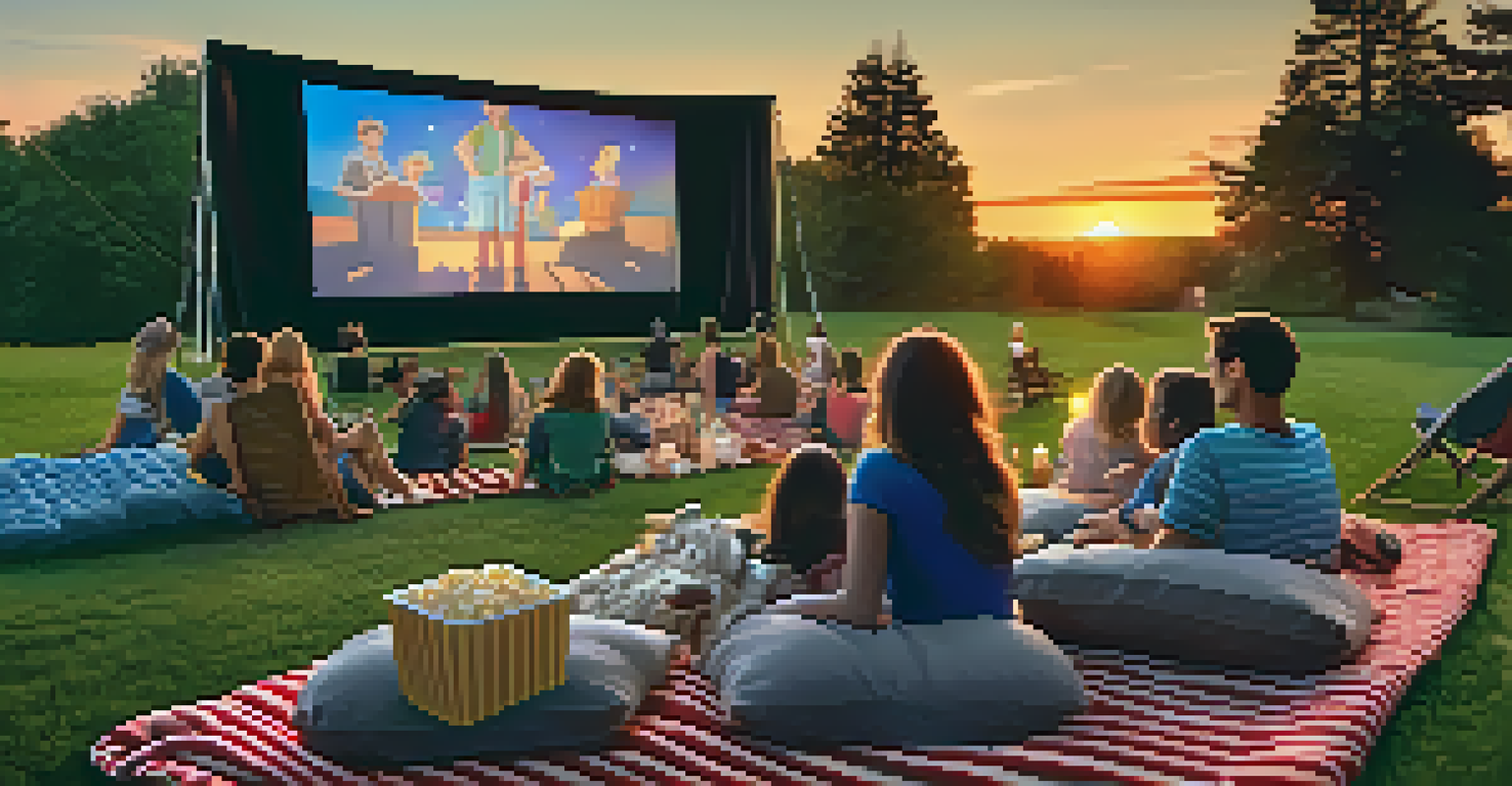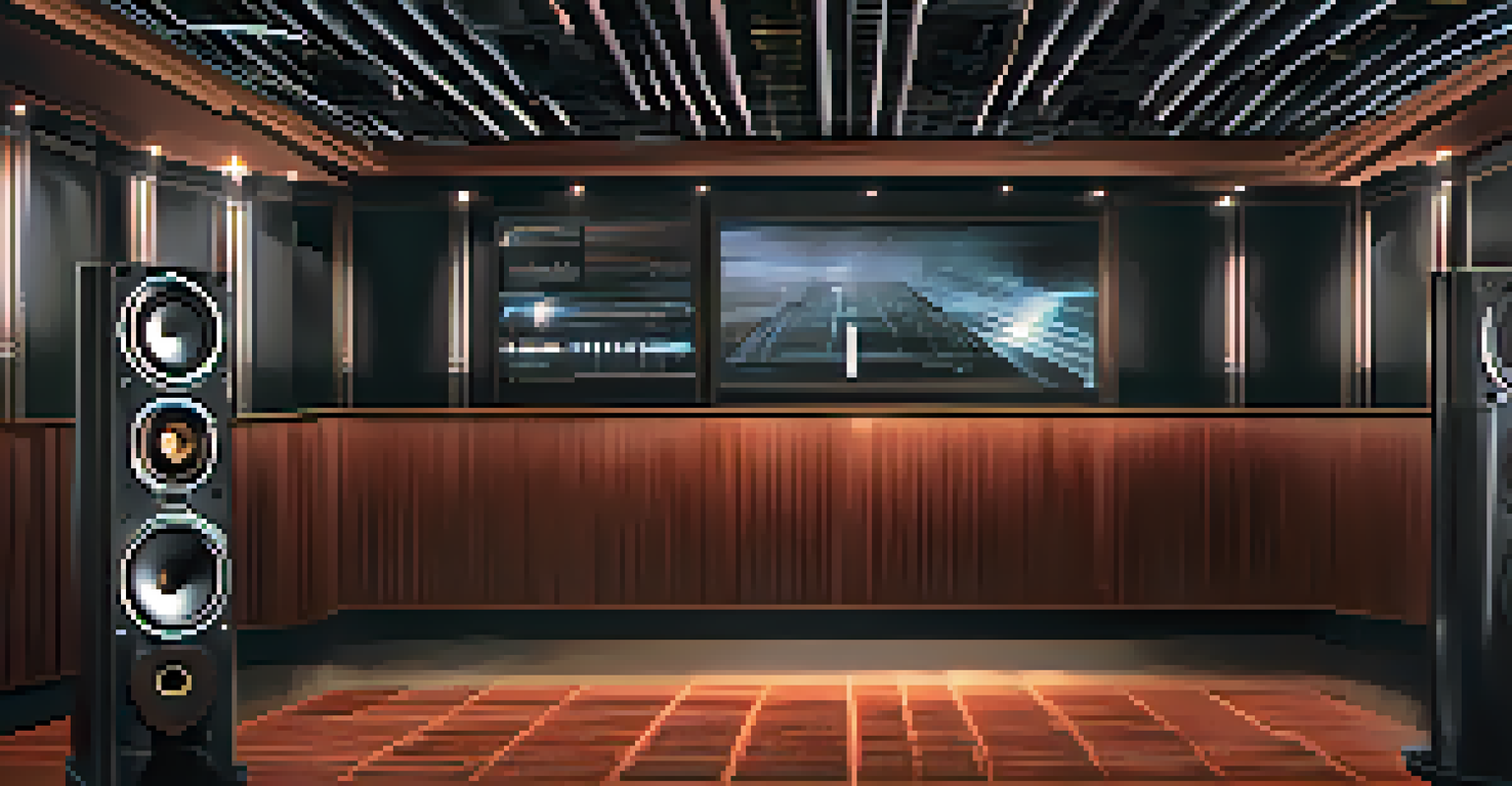The Role of Technology in Revolutionizing Movie Theaters

The Evolution of Movie Theaters Through Technology
Movie theaters have come a long way since their inception, evolving from simple screens to complex venues that offer immersive experiences. Today, technology plays a crucial role in this evolution, allowing theaters to enhance the way films are presented and enjoyed. For instance, the introduction of digital projection has replaced traditional film, providing sharper images and more vibrant colors, which significantly enhances the viewing experience.
Cinema is a matter of what's in the frame and what's out.
Moreover, the shift to digital has not only improved the quality of films but also streamlined the distribution process for studios. Instead of sending physical reels, movies can now be shared digitally, making it easier for theaters to access the latest releases. This efficiency allows theaters to showcase a wider variety of films, catering to diverse audiences and preferences.
Lastly, as theaters embrace technology, they often become community hubs that host special events, screenings, and festivals. This evolution fosters a sense of belonging among moviegoers and enriches the local culture, making the movie theater experience not just about watching films, but about sharing moments with others.
The Impact of Streaming Services on Traditional Theaters
Streaming services have changed the way we consume media, sparking a debate about the future of traditional theaters. With platforms like Netflix and Amazon Prime, viewers can access a vast array of films from the comfort of their homes, which has understandably shifted some audience preferences. However, this rise in streaming has also pushed theaters to innovate in order to compete.

Theaters are now offering unique experiences that streaming cannot replicate, such as IMAX screenings, 4D experiences, and live events. For instance, many theaters have invested in recliner seating and gourmet food options, transforming movie nights into luxurious outings. By enhancing comfort and providing exclusive experiences, theaters are enticing viewers to return.
Tech Enhances Theater Experiences
Innovations like digital projection and advanced sound systems significantly improve the quality of films and the overall viewing experience.
Furthermore, some theaters are also collaborating with streaming services to host exclusive premieres and screenings, blending the lines between traditional and digital. This partnership allows both parties to benefit and keeps the excitement of moviegoing alive in an age dominated by streaming.
The Role of Virtual Reality in Modern Cinemas
Virtual reality (VR) is one of the most exciting technologies making its way into movie theaters. It offers audiences a chance to immerse themselves in the film's environment, allowing them to feel like they are part of the story. This immersive experience can transform even a simple narrative into an unforgettable adventure, enhancing emotional engagement.
The best way to predict the future is to invent it.
Several theaters are now experimenting with VR stations where patrons can enjoy short films or interactive experiences before or after the main feature. This not only adds a new layer of excitement but also encourages audience interaction, making moviegoing more of a social event. Imagine stepping into the world of your favorite film, interacting with characters, and exploring settings in a way that traditional cinema can't offer.
As VR technology continues to advance, we can expect to see even more innovative applications within theaters. Whether it’s interactive storytelling or multi-sensory experiences, VR is set to revolutionize how audiences connect with films, pushing the boundaries of what we consider cinema.
Enhancing Sound Technology for a Richer Experience
Sound technology has also seen significant advancements, greatly enhancing the movie theater experience. Modern theaters are equipped with sophisticated audio systems that deliver immersive soundscapes, making viewers feel every heartbeat, whisper, or explosion. This technology transforms how we perceive films, allowing us to be fully enveloped in the audio-visual narrative.
For example, Dolby Atmos technology allows sound to move freely within a three-dimensional space, creating a more dynamic listening experience. This means that sounds can come from above, below, or around you, making action scenes feel more intense and dialogues clearer. Such innovations not only elevate the cinematic experience but also engage the audience on a deeper emotional level.
Streaming Forces Theaters to Adapt
The rise of streaming services has prompted theaters to offer unique experiences, such as luxury seating and exclusive premieres, to attract audiences.
As theaters continue to invest in cutting-edge sound systems, the goal remains to create an environment where audiences can escape reality and fully immerse themselves in the film. This commitment to enhancing sound technology ensures that movie theaters remain a favored choice for film enthusiasts.
The Rise of Interactive and Immersive Experiences
Interactive and immersive experiences are becoming increasingly popular in movie theaters, allowing audiences to engage with films in new and exciting ways. These experiences often combine elements of gaming and storytelling, challenging viewers to participate actively rather than passively watch. Such engagement can create memorable moments that linger long after the credits roll.
For instance, some theaters are adopting augmented reality (AR) experiences that allow audiences to interact with the film’s characters or elements through their smartphones. This added layer of interaction encourages viewers to explore the film's world, fostering a deeper connection with the story and characters. It’s a thrilling way to blend technology with storytelling.
Moreover, interactive screenings, where audiences can vote on plot twists or outcomes, are also gaining traction. These innovations not only make each viewing unique but also promote a communal atmosphere, as attendees share the experience together. As theaters continue to innovate, the lines between viewer and participant are blurring, creating a new era of film enjoyment.
Smart Technology Revolutionizing Theater Operations
Behind the scenes, smart technology is streamlining theater operations, enhancing efficiency and improving the overall customer experience. From automated ticketing systems to mobile apps for ordering concessions, technology is making it easier for moviegoers to enjoy their experience. These innovations reduce wait times and allow audiences to focus on what really matters—enjoying the film.
Additionally, data analytics is playing a crucial role in understanding audience preferences and optimizing showtimes. By analyzing viewing habits, theaters can tailor their offerings to better meet the needs of their audiences, whether that means showing more indie films or scheduling late-night screenings for younger crowds. This data-driven approach ensures that theaters remain relevant in a competitive market.
Sustainability Drives Theater Tech
Movie theaters are increasingly using technology to promote sustainability, from digital ticketing to eco-friendly building materials.
Moreover, social media integration allows theaters to engage with their audience in real-time, promoting upcoming films and special events. This connection fosters a sense of community, encouraging moviegoers to return regularly. As theaters continue to embrace smart technology, the overall experience becomes more enjoyable and streamlined for everyone involved.
Sustainability and Technology in Movie Theaters
As sustainability becomes an increasingly important focus, movie theaters are leveraging technology to reduce their environmental impact. From energy-efficient LED screens to eco-friendly building materials, theaters are making strides toward a greener future. This commitment not only benefits the planet but also resonates with audiences who prioritize sustainability in their choices.
Digital ticketing is another way theaters are cutting down on waste, eliminating the need for paper tickets and streamlining the entry process. This technology not only enhances convenience for moviegoers but also helps reduce the carbon footprint associated with printing and distributing physical tickets. It’s a win-win situation for both theaters and environmentally conscious patrons.

Additionally, some theaters are exploring innovative waste management solutions, such as composting food waste from concessions. By adopting such practices, theaters can demonstrate their commitment to sustainability, attracting audiences who value environmentally responsible entertainment options. As technology continues to evolve, theaters are positioned to lead the way in creating a more sustainable moviegoing experience.